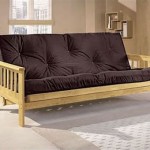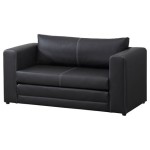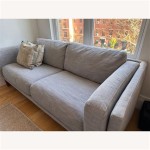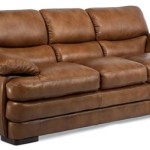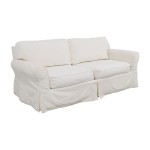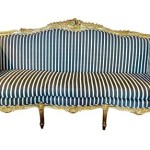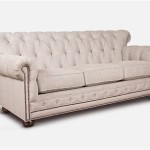The Art and Science of Leather Sofa Design
Leather sofas represent a significant investment in furniture, often perceived as a statement of style, comfort, and durability. The design of a leather sofa is a complex undertaking, requiring a blend of artistic vision, technical proficiency, and a deep understanding of material properties. Leather sofa designers are tasked with creating pieces that are not only aesthetically pleasing but also functional, comfortable, and long-lasting. The process involves careful consideration of ergonomics, structural integrity, and the overall user experience.
The design process begins with research and conceptualization. Designers analyze current market trends, consumer preferences, and emerging technologies in furniture manufacturing. This research informs the initial sketches and prototypes, which are then refined based on feedback and technical considerations. The selection of appropriate leather types, frame materials, and cushioning is crucial to the final product's quality and performance. Ultimately, the leather sofa designer's role is to translate an idea into a tangible product that meets the needs and expectations of the target audience.
Understanding the Properties of Leather
One of the most critical aspects of leather sofa design is a thorough understanding of leather itself. Leather is a natural material with inherent variations in texture, grain, and color. These variations are not imperfections but rather characteristics that contribute to the unique beauty and character of each piece. Designers must be able to identify different types of leather, such as full-grain, top-grain, and corrected-grain, and understand their respective strengths and weaknesses.
Full-grain leather, considered the highest quality, retains the natural grain of the hide and offers the greatest durability. Top-grain leather has had the outermost layer of the hide sanded to remove imperfections, resulting in a more uniform appearance. Corrected-grain leather undergoes more extensive processing to smooth the surface, often involving embossing or artificial graining. The choice of leather depends on factors such as budget, desired aesthetic, and intended use. A designer specializing in high-end pieces might prioritize full-grain leather for its premium look and longevity, while a designer focused on affordability might opt for top-grain or corrected-grain leather. The ability to predict how the leather will behave during the manufacturing process and over time is essential for creating a sofa that will maintain its appearance and structural integrity.
Furthermore, leather sofa designers need to understand the tanning process and the different types of tanning agents used. Vegetable tanning, a traditional method, uses natural tannins derived from plants, resulting in leather with a rich, earthy tone. Chrome tanning, a more modern method, uses chromium salts, producing leather that is softer and more resistant to water damage. The choice of tanning method can significantly affect the leather's properties and its suitability for specific applications.
The designer must also consider the leather's ability to stretch, breathe, and age gracefully. Leather will naturally stretch and conform to the shape of the user over time, creating a personalized seating experience. The ability of leather to breathe, allowing air to circulate, helps to regulate temperature and prevent moisture buildup. Finally, the aging process, known as patina, gives leather its unique character and enhances its beauty over time. A skilled designers understands these properties and incorporates them into the design process.
The Ergonomics of Seating Design
Beyond aesthetics, the ergonomics of a leather sofa are paramount to its comfort and usability. Ergonomics is the science of designing products and environments to fit the human body and promote well-being. In the context of sofa design, ergonomics involves careful consideration of factors such as seat height, seat depth, backrest angle, lumbar support, and armrest placement.
The seat height should be appropriate for the average user, allowing them to sit comfortably with their feet flat on the floor and their knees at a 90-degree angle. Seat depth, the distance from the front edge of the seat to the backrest, should be sufficient to provide adequate support for the thighs. The backrest angle should be slightly reclined, promoting a relaxed posture. Lumbar support, the curve in the lower backrest, is essential for maintaining proper spinal alignment and preventing back pain. Armrests should be positioned at a comfortable height and width, allowing users to rest their arms without straining their shoulders.
The selection of cushioning materials also plays a critical role in ergonomics. Foam, fiberfill, and down are commonly used cushioning materials, each with its own unique properties. Foam provides firm support and resistance to compression, making it suitable for seat cushions. Fiberfill offers a softer, more plush feel, making it suitable for back cushions and armrests. Down provides exceptional comfort and conforms to the user's body shape. A skilled designer will carefully select and combine these materials to create a balanced and supportive seating experience.
Furthermore, the designer must consider the relationship between the sofa and its surrounding environment. The height and depth of the sofa should be proportional to the size of the room, and the seating arrangement should encourage social interaction. The designer may also consider incorporating features such as adjustable headrests, reclining mechanisms, or built-in storage to enhance the sofa's functionality.
Structural Integrity and Durability
While aesthetics and ergonomics are important, the structural integrity and durability of a leather sofa are essential for ensuring its long-term performance. The design must consider the weight-bearing capacity of the frame, the strength of the joints, and the resistance of the materials to wear and tear. A well-designed sofa will be able to withstand daily use for many years without significant deterioration.
The frame is the foundation of the sofa, providing support for the cushions and the upholstery. Hardwood, such as oak or maple, is typically used for high-quality frames due to its strength and durability. Softwood, such as pine, is often used for less expensive frames. The frame should be properly joined using techniques such as mortise and tenon, dovetail, or screw and glue. Weak joints can lead to sagging, creaking, or even complete failure of the frame.
The suspension system, which supports the seat cushions, also plays a crucial role in durability. Sinuous springs, web suspension, and coil springs are common suspension systems. Sinuous springs, also known as no-sag springs, are made of steel wire and provide a firm, supportive feel. Web suspension consists of interwoven straps of webbing that provide a more flexible and comfortable seating experience. Coil springs offer excellent support and durability but are more expensive than other suspension systems.
The leather itself must be properly attached to the frame to prevent sagging or tearing. Techniques such as stapling, nailing, and stitching are used to secure the leather to the frame. The type of stitching used can also affect the sofa's durability. Topstitching, a decorative stitch that runs along the edges of the leather, adds strength and prevents the leather from unraveling. Double stitching, which involves two rows of stitching, provides even greater durability.
In addition to the frame and upholstery, the legs of the sofa must be strong enough to support the weight of the entire piece. Legs are commonly made of wood or metal and are attached to the frame using screws or bolts. The legs should be evenly spaced and properly aligned to prevent wobbling or tipping. The designer must consider all of these factors to create a sofa that is both aesthetically pleasing and structurally sound.
In the design of a leather sofa, all aspects from the selection of appropriate materials to the structural design are critical. A careful balance of visual appeal, ergonomics, and durability is desired and the skilled leather sofa designer seeks to blend these three elements.

Genuine Leather Ideas Advice On Modern Living

51 Leather Sofas To Add Effortless Refinement Any Home

A Guide To 6 Designer Leather Sofas Minotti London

Designer Sofa Set Durable Leatherette Luxury Furniture Se Gkw Retail

160 Best Modern Leather Sofa Ideas

15 Best Leather Sofas To Buy In 2024 The Couches

Leather Sofas Designer Brown

51 Leather Sofas To Add Effortless Refinement Any Home

Brown Modern Luxury Leather Sofa For Home

Parlor Leather Sofa 60 82 West Elm

